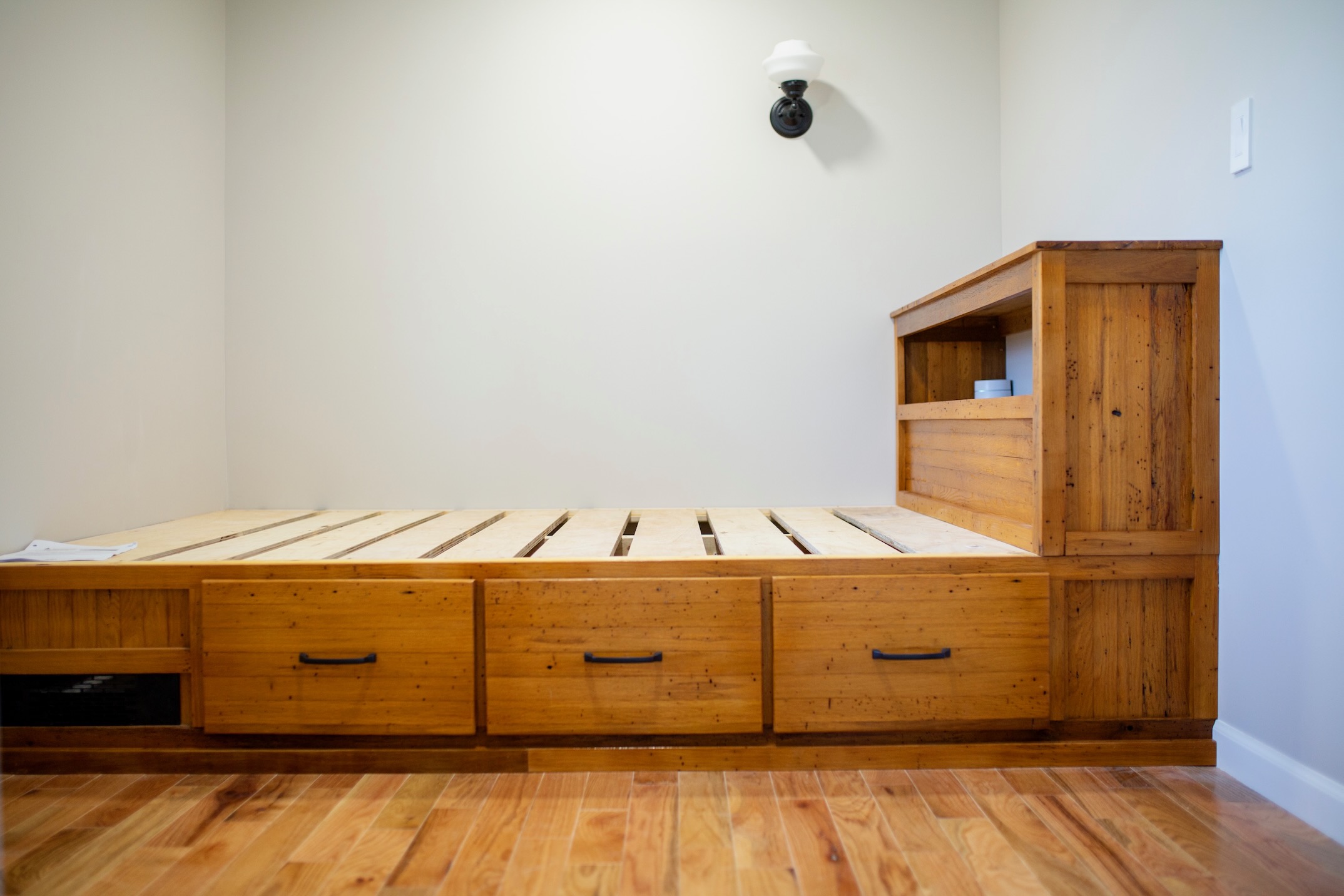Building Better, not Bigger
A tradeoff that is made all too often in home building is trading quality for quantity. At Akeldama, we prioritize quality and implement clever design to make every square foot count.
In a real estate market governed by cost per square foot (sqft) and with consumers perceiving large houses as nice houses, builders are incentivized to make large structures with low quality materials rather than modest sized structures with high quality materials.
At our core, though, we all know that bigger does not equate to better. None of us idealize setting up our bed and couch in an airport hangar. Even those of us that love the oversized spaces found in mansions and barndominiums want our bedrooms and bathrooms partitioned off - we subconsciously recognize the importance of building to a human scale.
With a human scale in mind, we pride ourselves in making every project punch above its weight in square footage. Spatially optimized design, built-ins, and hybrid spaces are ways we make limited amounts of space go further. With our client’s homes we make existing spaces more functional before adding additional space, only doing the latter when absolutely necessary.

There is great value to building smaller spaces. With the same budget as an average 2,650 sqft new construction house, a house with a smaller footprint can enjoy higher quality materials, increased energy efficiency, improved air quality, and be just as functional when designed properly (see The Importance of Building Science for more on how we improve these aspects of homes).

Despite the continually increasing cost of materials and labor, house sizes have ballooned in the last century. The average size of a new construction home has risen over 250% from 1,048 sqft in 1920 to 2,657 in 2014, while the average occupants per household has reduced by 41% from 4.33 to 2.54.
Thus, the average American lives in more than four times as much square footage as we did a century ago, with the average floor area per person increasing from 242 sqft to 1046 sqft. Meanwhile, over the same course of time the average house has shifted from an architecturally unified and modest structure made with high quality natural materials and beautiful craftsmanship shown in hardwood floors, doors, window, and trim to an oversized assembly of synthetic materials that has given up on being holistically beautiful (see Maintaining Architectural Integrity).
It is our goal at Akeldama to go against these trends and create highly functional, entirely beautiful houses - prioritizing quality over size rather than having one over compensate for the other.